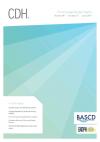Community Dental Health

- Cover Date:
- June 2017
- Print ISSN:
- 0265 539X
- Vol:
- 34
- Issue:
- 2
Use of Jamaican Sign language in the provision of dental health care
Abstract: The United Nations Development Assistance Framework for Jamaica 2012-2016 identifies as an outcome increased access to improved quality health and education services for socially excluded and at risk populations. The Deaf Jamaican population can be categorised as a socially excluded population. The communication barrier resulting from their deafness often leads to difficulties in accessing healthcare. The Faculty of Medical Sciences at The University of the West Indies, Mona Campus, implemented a programme aimed at overcoming this communication barrier and improving direct communication between Deaf patients and health professionals treating them. Competence in Jamaican Sign Language is integrated into the curricula of programmes offered by the faculty and mandated in the dentistry programme, and extends to the clinical training at the dental polyclinic where Deaf patients are seen by student dentists who can communicate with them in Jamaican sign language. This paper outlines the policies and systems employed worldwide for interacting with and treating Deaf patients at dental health care facilities, and focuses on the policies and practices governing the dental care of Deaf patients at the Mona Dental Polyclinic with a view to providing a model for government facilities locally and regionally. Public health competencies: Communication, management
Key words: deaf, dental healthcare, accessibility, polyclinic, dental health policy, dental health inequality, Jamaica
doi:10.1922/CDH_3913Cumberbatch05
- Article Price
- £15.00
- Institution Article Price
- £
- Page Start
- 72
- Page End
- 76
- Authors
- K. Cumberbatch, T. Jones
Articles from this issue
- Title
- Pg. Start
- Pg. End
- Communities in action: developing a dental ambassador training programme for adults with learning disability
- 77
- 79
- Public health intervention over four decades for the children in the Australian Capital Territory: Have we reached the point of diminishing returns?
- 84
- 87
- Relationship between mental health risk factors and oral symptoms in adolescents: Korea Youth Risk Behavior Webbased Survey, 2013
- 88
- 92
- PeP-SCOT a health coaching intervention for people in prisons: the development of the intervention protocol
- 97
- 101
- Productive efficiency and its determinants in the Community Dental Service in the north-west of England
- 102
- 106
- Socio-demographic and area-related factors associated with the prevalence of caries among preschool children in Greece.
- 112
- 117
- Dental caries experience, rather than toothbrushing, influences the incidence of dental caries in young Japanese adults
- 118
- 121
